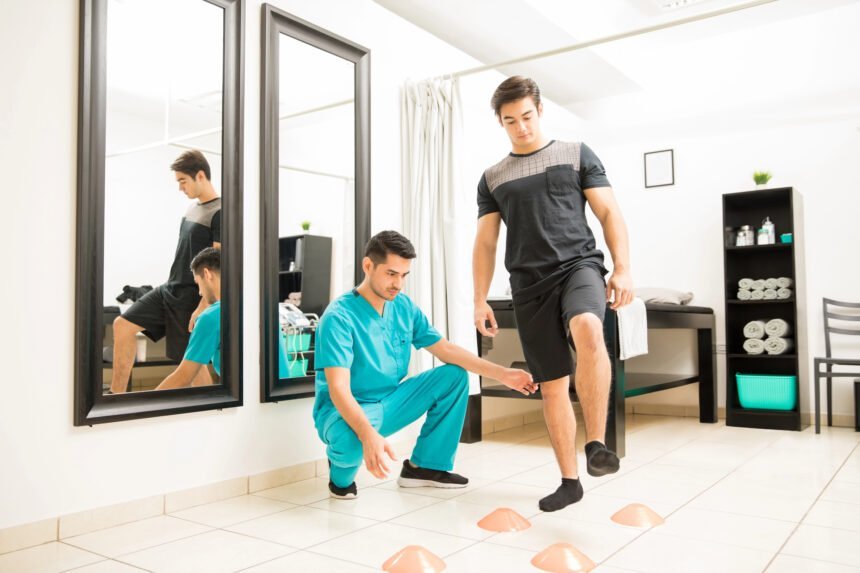We have talked about some of the benefits of physiotherapy, which can be very helpful for athletes that have struggled with injuries. We wanted to cover some of the specific types of physical therapies, which can be especially effective for anyone that does intense sports.
Injuries are very common among athletes. One study found that 91% of university athletes report at least one injury during their athletic careers.
As athletes push the boundaries of physical performance, effective recovery strategies become increasingly crucial to maintain peak performance and prolong careers. Advanced therapies are revolutionizing sports health by offering innovative solutions that enhance recovery, reduce injury risk, and improve overall athletic performance. This essay explores how these cutting-edge therapies are transforming the landscape of sports health and recovery.
1. Cryotherapy: A Cold Revolution
Cryotherapy has become one of the most popular advanced therapies in sports health, embraced by athletes across various disciplines for its ability to speed up recovery and reduce muscle soreness. WebMD has a great article on this cutting-edge form of physical therapy.
Cryotherapy involves exposing the body to extremely cold temperatures for short periods, typically in a specialized chamber. The intense cold triggers a range of physiological responses, including reduced inflammation, improved circulation, and the release of endorphins.
For athletes, the benefits of cryotherapy are significant. By reducing inflammation, cryotherapy helps to alleviate muscle soreness and joint pain, allowing athletes to recover more quickly between training sessions or after competition. This accelerated recovery process is crucial for maintaining high levels of performance, especially in sports with demanding schedules. Moreover, the mood-enhancing effects of cryotherapy can contribute to mental well-being, which is an often overlooked aspect of athletic recovery. This can be a good option for athletes that want to recover quickly.
2. Hyperbaric Oxygen Therapy (HBOT): Enhancing Healing
Hyperbaric Oxygen Therapy (HBOT) is another advanced therapy that is making waves in the sports world. HBOT involves breathing pure oxygen in a pressurized chamber, which increases the amount of oxygen delivered to tissues throughout the body. This heightened oxygenation promotes faster healing of injured tissues, reduces inflammation, and enhances the body’s natural recovery processes.
Athletes use HBOT to recover from injuries such as muscle strains, ligament tears, and fractures. The therapy is particularly beneficial for reducing recovery times from injuries that would otherwise sideline an athlete for extended periods. Additionally, HBOT has been shown to improve overall athletic performance by enhancing stamina, reducing fatigue, and accelerating post-exercise recovery.
3. Stem Cell Therapy: Pioneering Regeneration
Stem cell therapy at clinics like bioxcellerator.com represents the frontier of sports health, offering the potential to repair and regenerate damaged tissues at a cellular level. Stem cells have the unique ability to differentiate into various cell types, making them a powerful tool for treating injuries that were once considered career-threatening.
Athletes are increasingly turning to stem cell therapy to treat chronic injuries such as cartilage damage, degenerative joint conditions, and severe muscle tears. By injecting stem cells into the injured area, the therapy promotes the regeneration of healthy tissue, potentially restoring full function and mobility. Stem cells’ ability to repair tissues with limited healing capacity makes this therapy a game-changer in sports recovery.
4. Advanced Wearable Technology: Data-Driven Recovery
Advanced wearable technology is playing an integral role in enhancing athlete recovery by providing real-time data on physiological metrics such as heart rate variability, sleep quality, and muscle fatigue. These wearables allow athletes and coaches to monitor recovery and make data-driven decisions about training intensity and recovery strategies.
For example, wearables that track sleep patterns can help athletes optimize their sleep, which is critical for recovery. Devices monitoring heart rate variability can indicate whether an athlete fully recovers or needs additional rest. By leveraging this data, athletes can fine-tune their recovery routines, ensuring they are always performing at their best.
Conclusion
Integrating advanced therapies in sports health is revolutionizing how athletes approach recovery. Cryotherapy, hyperbaric oxygen therapy, PRP therapy, stem cell therapy, and advanced wearable technology are all contributing to faster recovery times, reduced injury risk, and enhanced performance. As these therapies continue to evolve and become more accessible, they will play an increasingly important role in helping athletes maintain peak physical condition and extend their careers. The future of sports recovery is bright, with advanced therapies leading the way in optimizing health and performance for athletes at all levels.

